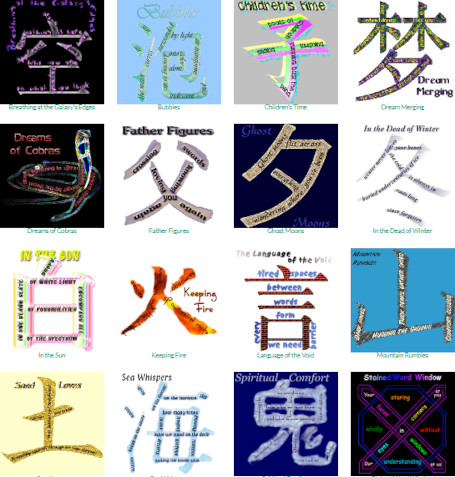Kanji-kus are a series of short hypertexts where a stylized Japanese kanji holds a short, haikuesque poem in English within the lines. Each of these poem lines becomes the title for a corresponding short node, and these nodes comprise a short story, poem, or essay. Readers can mouseover the kanji-ku to access text or go through textual links. I was interested in exploring what you could do within the structure of the ideogram that meant the word, using layering and spatial relations as well as link and image to incorporate meaning and mood.
For me, this kanji-ku artform culminated in my mystery novel, Disappearing Rain, in 2001.
